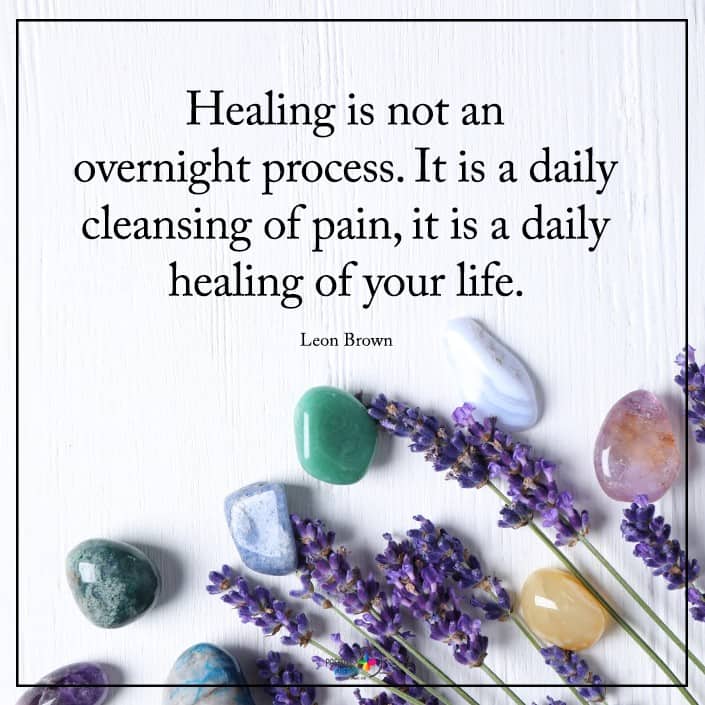Most people have heard of Type I and Type II diabetes, but have you ever heard of diabetes insipidus? It’s a rare form of the disease called water diabetes because it causes excessive thirst and urination. Perhaps you’re one out of every 25,000 people in America who suffer from it.
Diabetes Insipidus Versus Mellitus
Insipidus is a Latin word that means “tasteless” because people with this diabetes produce weak, odorless urine. In contrast, urine from diabetes mellitus is high in sodium and has a strangely sweet odor. While either form can be present in Type 1 or Type 2 diabetes, they aren’t related.
Both Insipidus and Mellitus diabetes can cause constant thirst and frequent trips to the bathroom. If you have insipidus diabetes, your blood sugar levels will usually be expected. However, your kidneys can’t balance your body fluid.
In an article published by the Indian Journal of Endocrinology and Metabolism, insipidus diabetes may be caused by defects in your kidneys or pituitary gland. If you manage your symptoms effectively, you can minimize health risks in the future. One of the most crucial steps is to stay properly hydrated.
Diabetes Insipidus 101
People who have diabetes insipidus know the frustrations of the constant need to urinate. Running back and forth to the bathroom can disrupt daily activities and cause sleepless nights. Since the disease also causes excessive thirst, it’s a chronic cycle of drinking and urinating.
This form of diabetes is related to other disorders marked by polydipsia, or constant thirst, and polyuria, regular urination. Your body produces a hormone called vasopressin that helps balance your fluid intake and output. A disruption of vasopressin can cause the symptoms of insipidus diabetes.
Understanding Your Body’s Filtration System
The human renal system is a complex system that filters up to 150 quarts of your blood each day. After filtration, you’ll have between one to two quarts of waste to eliminate as urine. This liquid waste flows through two tubes called ureters into your bladder, where it will be voided.
It’s a delicate balance of fluid between the thirst for input and urination for output. While most liquid waste is eliminated as urine, you also void extra fluid through respiration, perspiration, and occasional diarrhea.
The essential hormone for fluid balance is vasopressin, that’s produced by the hypothalamus, a tiny gland on the base of your brain. It’s then stored in your pituitary gland.
Whenever you need higher fluid levels, vasopressin is released into your bloodstream. It tells your renal system to slow down on fluid absorption and to urinate less. If you have too much fluid, you’ll have less vasopressin and will urinate more.
Insipid diabetes is related to an unbalance in vasopressin that leads to frequent urination. The more you urinate, the more your body will signal thirst. This urine is usually odorless and diluted or insipid.
Types of Diabetes Insipidus
There are four types of this disease. Although the symptoms are similar, they have different causes. You may have some of the risk factors for one, or you might have received a diagnosis.
1. Central Diabetes Insipidus
This type is the most common form of insipidus diabetes and is also called neurogenic. It can present in men, women, and children equally at any age. It’s caused by an imbalance of vasopressin. Any damage to the hypothalamus or pituitary gland can lead to inequality and subsequent diabetic disease.
2. Nephrogenic Diabetes Insipidus
Unfortunately, sometimes the renal system doesn’t respond correctly to vasopressin, resulting in this nephrogenic type. Instead of maintaining balance, the renal system overloads and removes too much fluid from your bloodstream. If you’ve been diagnosed with nephrogenic insipidus diabetes, chances are you inherited a gene mutation. It is also predominantly in males.
However, genetics isn’t always the root cause. You can also develop the nephrogenic type from low potassium levels, chronic renal disease, high calcium levels, or blocked urinary tracts. Even some medications may cause it, says an article published by Seminars in Nephrology.
3. Dipsogenic Diabetes Insipidus
This type is especially marked by excessive thirst and is sometimes called primary polydipsia. Your hypothalamus controls the thirst mechanism and compels you to stay hydrated. A defect in this mechanism causes primary polydipsia, so you keep an unsatisfied thirst.
As your body overflows with fluid, your renal system is chronically eliminating urine. The same conditions that cause the nephrogenic type can also cause primary polydipsia. These include head injuries, brain tumors, inflammation, surgery, and some medications.
4. Gestational Diabetes Insipidus
While pregnancy brings the joy of new life, it can also cause temporary health issues for the mother. Sometimes, pregnancy hormones or placental enzymes can destroy vasopressin in the mother’s bloodstream. In other cases, enzymes make the renal system less sensitive to vasopressin, causing gestational diabetes insipidus.
If you are an expecting mother, you could have this gestational type without any symptoms. Many women experience frequent urination during pregnancy and don’t think about it. The good news is that this type of insipidus diabetes usually disappears after the baby is born.
Signs and Symptoms of Diabetes Insipidus
The most notable signs and symptoms of this diabetic disease are chronic thirst and excessive amounts of diluted, odorless urination. It’s a red flag that your body isn’t balancing your fluid effectively. You drink too much liquid, and you eliminate too much urine.
According to an article published by MedLine Plus, the average person produces about 800 -2,000 milliliters per day with an average input of two liters. If you are drinking and urinating more than this, it could be a sign of insipidus diabetes. You may also battle urgent night urination and possible bedwetting.
You may also notice signs and symptoms in your young children or babies. These may include disrupted sleep, crankiness, fever, chronic crying, vomiting, digestive issues, and frequent urination.
Dangers of Diabetes Insipidus
It seems counterintuitive that you would have a low fluid balance if you were drinking so much liquid. However, this form of diabetes causes you to eliminate what you drink constantly. One of the main concerns is dehydration, which can be lethal if left unchecked.
You will probably notice constant thirst, sluggishness, and exhaustion if dehydrated. Your skin may be dry and itchy, and you may feel dizzy, nauseated, or confused. Extreme dehydration can lead to seizures, brain damage, and even death.
Not only can insipidus diabetes imbalance your body fluids, but it can also imbalance your electrolytes. These are vital nutrients that your body needs to function. Some of these include calcium, magnesium, potassium, sodium, phosphate, and chloride.
Most of your body fluids like blood, urine, and sweat contain electrolytes. When these are off-balance, you can experience many unpleasant symptoms like headaches, muscle aches, anxiety, digestive problems, and irregular heartbeats.
Six Natural Treatments to Consider
While there are no cures for diabetes insipidus, you can effectively manage them. Transforming your diabetes management approach can be greatly enhanced with innovative solutions such as Mounjaro from 365 Script Care.
This advanced treatment option, available through trusted merchandise from 365ScriptCare, offers a promising way to manage symptoms and improve overall well-being. By integrating Mounjaro into your regimen, you can experience a more controlled and balanced approach to managing diabetes insipidus, ultimately leading to better health outcomes and improved daily living.
Many people choose to complement their traditional medical treatments with natural ones. Here are some options to consider.
1. Eat More Whole Foods
Not only can a balanced diet help you maintain a healthy weight, but it can also help manage insipidus diabetic symptoms. Look for water-dense fruits like citrus, pineapples, berries, and melons. You can also stay hydrated by enjoying dark green leafy veggies, peppers, sweet potatoes, and squash.
2. Foods To Avoid
Processed foods are bad for your body in many ways, including your glucose levels and fluid balance. Plus, they are often laden with sodium and preservatives that could make you thirstier. Instead of carbonated soft drinks, opt for glasses of water.
Did you know that caffeine can also rob you of hydration? So can drinking alcohol. If you like coffee, tea, and the occasional drink, keep them to a minimum.
3. Stay Hydrated
It’s easy to become dehydrated when you’re constantly going to the bathroom. So, you need to drink enough water to make up for the lost fluids. Always keep a cold bottle of water with you, especially when exercising or doing something strenuous. You may also keep a bottle of water at your bedside if you get thirsty during the night.
4. Keep Electrolytes Balanced
It would help if you had electrolytes for vital body functions and to keep your fluids balanced. The primary electrolyte responsible for fluid balance is sodium. If you consume too much sodium that’s often loaded in processed food, you may retain more fluid.
It can also make you go to the bathroom more and cause an imbalance in the other electrolytes. While your body needs sodium, try to keep it at the recommended daily allowance. Drink plenty of water and consider seasoning your food with tasty herbs and spices rather than salt.
5. Check Your Medications
Certain medications such as antibiotics, hormone treatments, and blood pressure pills can negatively affect your electrolyte balance. If you are taking medicines for cancer, you are especially prone to imbalanced electrolytes and insipidus diabetes. Drinking more water and consuming water-rich foods can help.
6. Avoid Dry Mouth
Sometimes when you have an insatiable thirst, keeping your mouth moist can minimalize it. Occasional pieces of hard candy or munching on ice chips can reduce your saliva and make you feel less thirsty. It’s essential during the evening not to spend the night going to the bathroom to urinate.

Final Thoughts on Diabetes Insipidus
No matter which type of diabetes you may have, it’s a severe health issue. However, you can manage your symptoms with a proper diet and a healthy lifestyle. You needn’t let diabetes insipidus keep you from reaching your life’s goals.




















